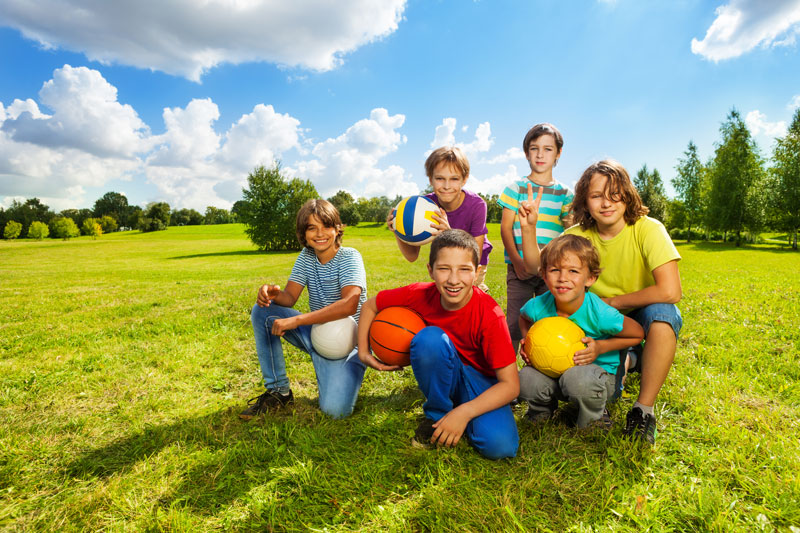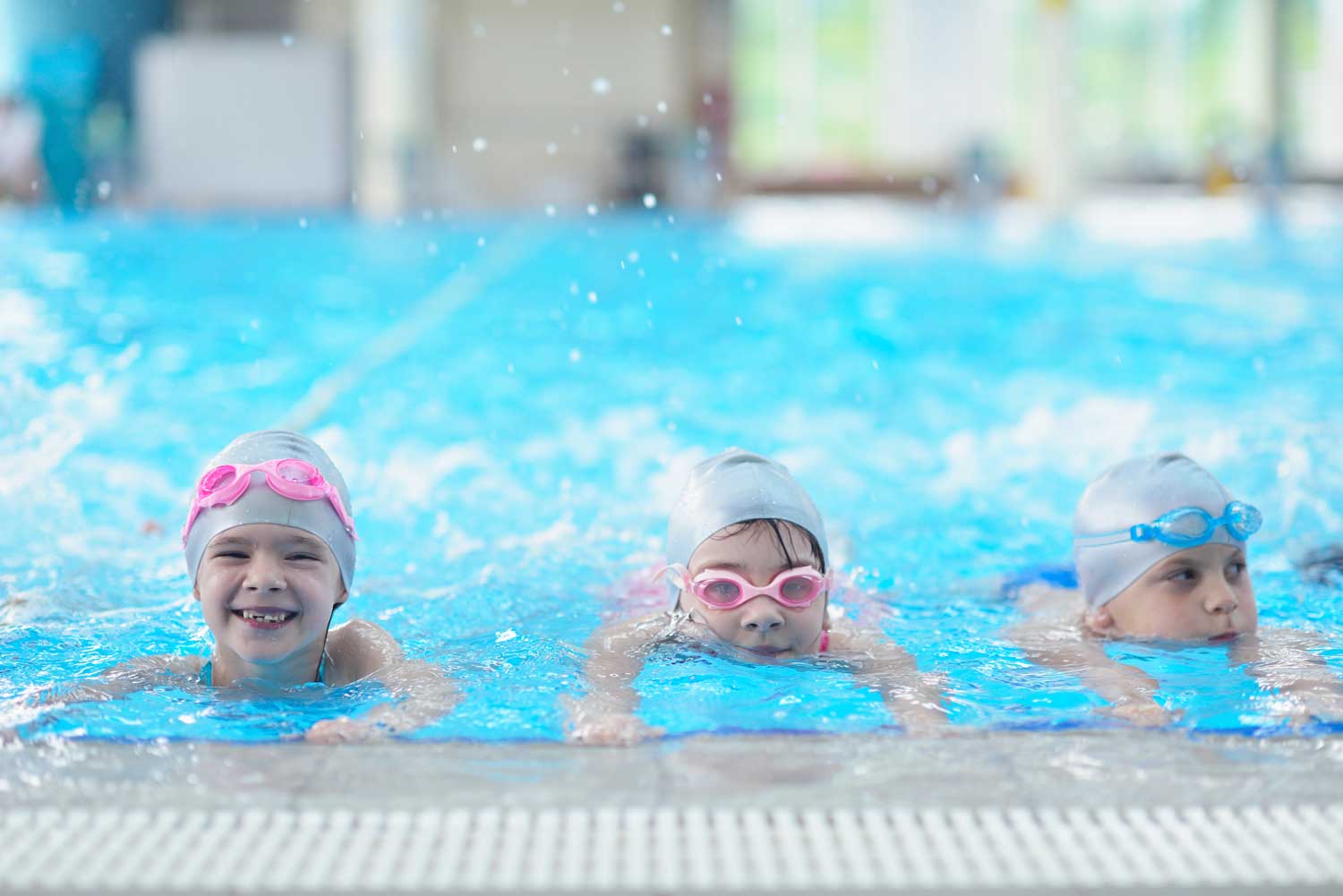7 Fun Exercises for Kids with Autism
Exercise is vital for healthy growth and development in all children, but kids with autism often have trouble getting enough physical activity. Autism spectrum disorder (also simply known as autism or ASD) is a neurodevelopmental condition that impacts a child’s behaviour and social and communication skills. Figures from the Australian Bureau of Statistics indicate that around 1 in 150 Australians have autism, with males 4.1 times more likely to be affected than females i, although Autism Spectrum Australia believe about 1 in 70 people are on the spectrumii.
The issues associated with autism can make it more difficult for children to participate in physical endeavours such as team sports. Sensory processing problems may also make it hard for kids with autism to exercise in some environments, such as bright or noisy gym classes or indoor games centers. Fortunately, however, there are ways to make exercise accessible and fun so kids with autism can experience all the benefits of a physically active lifestyle.
At Active Ability, our exercise physiologists have the perfect exercises for kids living with autism. If your child has autism, we’ve outlined some fun exercises to try below. But first, it can help to understand more about why exercise is so important for your child’s wellbeing.
Why is exercise important for kids with autism?
Exercise has proven physical and mental health benefits in adults and children, such as reducing the risk of developing many health conditions (including type 2 diabetes and high blood pressure), helping to maintain a healthy weight, and supporting a positive mood.
For children and adolescents, exercise also supports the development of coordination, muscle strength, strong bones, and fine and gross motor skills.
Exercise for kids with ASD can improve autism symptoms, motor skills, and quality of life
For kids with autism, research indicates exercise can help with the symptoms and enhance function and quality of life. A 2018 studyiii found that compared to a non-exercising control group, children with ASD who underwent an exercise intervention for 48 weeks experienced benefits to their metabolic health (cholesterol levels) and autism traits. Parent perceptions of their child’s quality of life also increased significantly compared to controls. The study’s authors conclude their findings provide support for using exercise and physical activity interventions in children with ASD.
Another research paper published in 2018iv analysed the results from 29 studies looking at physical activity interventions in over 1,000 youth with ASD. They found that physical activity programs have a moderate or large effect on a wide variety of outcomes, including development of motor skills, skill-related fitness, social functioning, and muscular strength and endurance.
A 2010 systematic reviewv which explored 18 studies looking at physical activity interventions in adults and children with ASD found that reported results included improved physical fitness and a reduction in stereotypical, aggressive, and off-task behaviours.
hidden

Exercise can support the development of physical, social and communication skills
Kids with autism often don’t get enough exercise
These are just some of the studies which have shown how exercise can help kids with autism. However, other studies show that kids with ASD have lower levels of physical activity than their typically developing peers. A 2020 review of 21 studiesvi found that only 42% of participants with ASD met recommended physical activity guidelines. They also discovered a range of things that could be barriers to children with autism achieving adequate physical activity levels, including lower physical fitness, inadequate social skills, fear of injury, and lack of availability of appropriate programs. This is why fun exercises for kids with autism are so important. The authors conclude there is a pressing need to design effective programs that promote physical activity for children and adolescents with ASD.
The benefits of exercise for kids with autism
As noted above, exercise has a wide range of benefits for kids with ASD. These include improvements in:
- Behaviour – such as a reduction in repetitive and self-stimulatory behaviours
- Motor skills – including skills like running, jumping, and kicking a ball
- Social function – exercise programs can provide an opportunity for kids to socialise in a natural environment
- Communication skills – group programs can help kids with autism interact with others in a relaxed setting
- Muscle strength and physical fitness – which is important for participation in everyday life and activities such as sports
- Balance and coordination – which are also important for participation in sports, school and community activities
- Physical health and wellbeing – by supporting healthy metabolism and weight
- Mental wellbeing – exercise releases chemicals which boost mood and help to relieve anxiety and depression symptoms
- Sleep – regular physical activity can enhance sleep quality and quantity
- Overall quality of life.
7 fun exercises for kids with autism
It’s clear that exercise plays a key role in supporting children with autism to develop to their full potential. Here are seven types of exercise you can try with your child.
1. Dance
Dance is a great way to facilitate movement, get the heart pumping, build muscle strength, and boost skills in coordination and balance. You might like to encourage your child to dance along with their favourite music at home or join a class suited to their abilities and preferences.
2. Swimming or water play
Some children with sensory processing issues love the water. You could enrol your child in swimming lessons, group aquatic therapy, or simply enjoy splashing around together in your local pool. Research has shown that aquatic therapy can improve motor skills and functional performance in children with ASDvii. Just be sure to follow water safety precautions and never leave your child around water unsupervised.
3. Martial arts
Martial arts focus on developing skills like body awareness, strength, agility and balance. Classes are also typically graded, allowing children and adults to progress as they attain new levels of skill.
Research indicates that martial arts-based interventions can have positive effects on symptoms and function in children and youth with ASD, including improved social interaction, communication skills, self-regulation, memory, postural control, and cognitive function viii.

Aquatic therapy can improve motor skills and function in children with autism
4. Ball throwing
The ability to throw a ball is important for many sports, including popular ones like netball and rugby. Throwing practice can improve balance and coordination, while throwing a weighted ball (medicine ball) can also improve strength.
You could practice throwing a ball with your child, or have them throw it against a wall, at the ground, or at a target (such as into a hoop).
5. Jumping
Jumping activities help to promote muscle strength, cardiovascular fitness, and healthy bone development. Try jumping on the spot to reach a target (such as a spot on the wall), jumping on a trampoline, or star jumps to include arm movement. Always start a jump with the knees bent and bend the knees again on landing. If jumping is going well, you can progress to hopping.
6. Crawling
In infants, crawling helps to develop coordination and build strength in the trunk, arms and legs. Moving the arms and legs in an alternate fashion (which is called cross-lateral movement) also helps to build connections between the two sides of the brain, which is important for physical coordination and thinking activities.
Young children might enjoy games crawling on all fours. Try getting them to crawl around after a ball or crawl like their favourite animal.
7. Walking or running
Walking is one of the simplest ways to build more physical activity into your child’s life. Walking fast enough to get their breathing rate up will improve your child’s fitness. Try walking around your suburb, walking to the shops, or exploring a local park, beach or other outdoor attraction.
If your child is up to it, include bursts of running, such as running to the next tree or the end of the block. As their fitness level and skill improves, encourage them to run further.
How an Accredited Exercise Physiologist can help children with autism
Every child is different and there’s no one-size-fits-all approach to exercise for kids with ASD. The most important thing is finding activities your child enjoys so they’ll stick with their program.
Children with autism can have symptoms ranging from mild to profound, and many need some support to participate in physical activities. As experts in exercise prescription, Accredited Exercise Physiologists (AEPs) are trained to develop individualised programs suited to each child’s needs and goals.
The AEPs at Active Ability have a special interest in working with children with neurodevelopmental disabilities such as ASD. They understand the potential barriers to physical activity and design safe and effective programs tailored to your child’s health needs, goals and preferences. They focus on making exercise fun, so that physical activity becomes part of your child’s healthy everyday lifestyle.
To discuss how we might be able to help you, contact our friendly team on (02) 8678 7874, email hello@activeability.com.au or fill in our contact form.
hidden
REFERENCES:
[i] – Australian Bureau of Statistics (Updated May 2020). Autism in Australia. https://www.abs.gov.au/ausstats/abs@.nsf/Lookup/4430.0Main%20Features752015. Accessed online 1.6.2022.
[ii] – Autism Spectrum Australia (July 2018). Autism prevalence rate up by an estimated 40% to 1 in 70 people. https://www.autismspectrum.org.au/news/autism-prevalence-rate-up-by-an-estimated-40-to-1-in-70-people-11-07-2018. Accessed online 2.6.2022.
[iii] – Perceptual and motor skills (February 2018). Exercise Effects for Children With Autism Spectrum Disorder: Metabolic Health, Autistic Traits, and Quality of Life. https://pubmed.ncbi.nlm.nih.gov/29226773/. Accessed online 1.6.2022.
[iv] – Autism research (June 2018). The effect of physical activity interventions on youth with autism spectrum disorder: A meta-analysis. https://pubmed.ncbi.nlm.nih.gov/29693781/. Accessed online 1.6.2022.
[v] – Research in Autism Spectrum Disorders (October 2010). Physical exercise and individuals with autism spectrum disorders: A systematic review. https://www.sciencedirect.com/science/article/abs/pii/S1750946710000073?via%3Dihub. Accessed online 1.6.2022
[vi] – Preventive medicine reports (June 2020). Accelerometer-measured physical activity levels in children and adolescents with autism spectrum disorder: A systematic review. https://www.ncbi.nlm.nih.gov/pmc/articles/PMC7327848/. Accessed online 1.6.2022.
[vii] – Journal of Autism and Developmental Disorders (January 2018). Effectiveness of a Multisystem Aquatic Therapy for Children with Autism Spectrum Disorders. https://link.springer.com/article/10.1007/s10803-017-3456-y. Accessed online 1.6.2022.
[viii] – Archives of Budo (May 2017). Martial arts for health benefits in children and youth with autism spectrum disorder: A systematic review. https://www.researchgate.net/publication/317300531_Martial_arts_for_health_benefits_in_children_and_youth_with_autism_spectrum_disorder_A_systematic_review. Accessed online 1.6.2022.